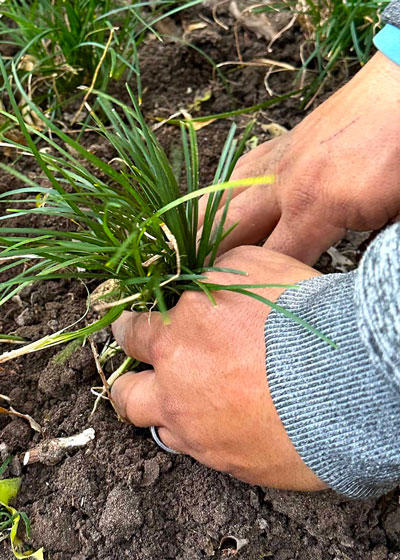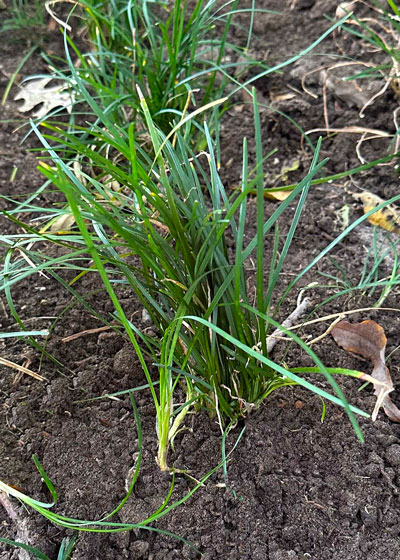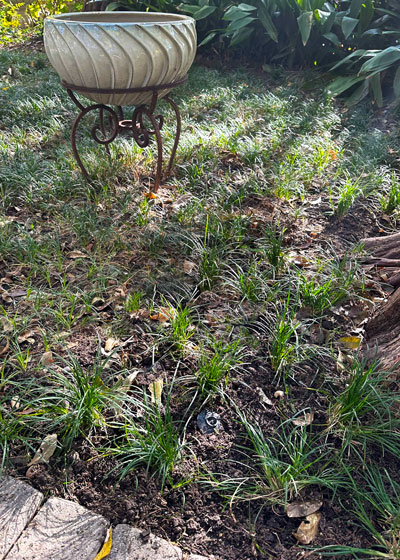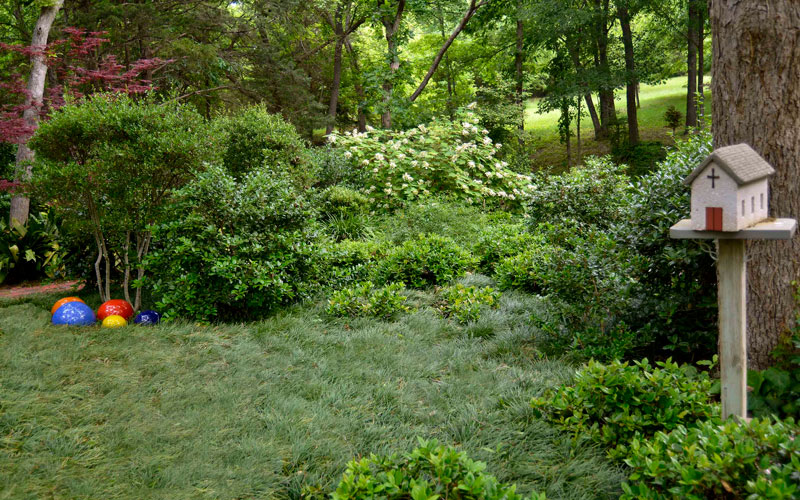Great time for planting mondograss
I’ve told you elsewhere in this week’s e-gardens that we live in an 11-acre forest that’s on both sides of a dry stream bed. However, when heavy rains come, that stream bed can run 6 or 7 ft. deep and 15 ft. wide, and erosion along its banks was becoming a problem.
When I needed (a) something to take the place of turfgrass in shade and (b) a plant that would hold the soil against erosion, mondograss came to my rescue.
However, after a frighteningly dry summer and low water pressures, a few areas of our mondograss thinned out along our driveway on the uphill side of our house.
We dug plants from the sides of the dense old plantings and broke them into fist-sized clumps, then planted them into the voids.




Note A: I use a flat-bladed nursery spade, also known as a “tile spade,” to lift my mondograss. It allows me to cut a straight line of the “sod,” filling the void with topsoil once the mondograss has been removed.
Note B: Mondograss can be dug and divided at any time of the year (as long as the ground isn’t frozen). Late spring and anytime in fall would be my preferences.
Note C: This is a plant with several names. Botanically it’s Ophiopogon japonicus. Its common names include “mondograss,” “lilyturf,” and “monkeygrass.” Do not confuse this, however, with dwarf mondograss – the much smaller and slower-growing sister. I would never attempt any of this with that lovely little plant.

